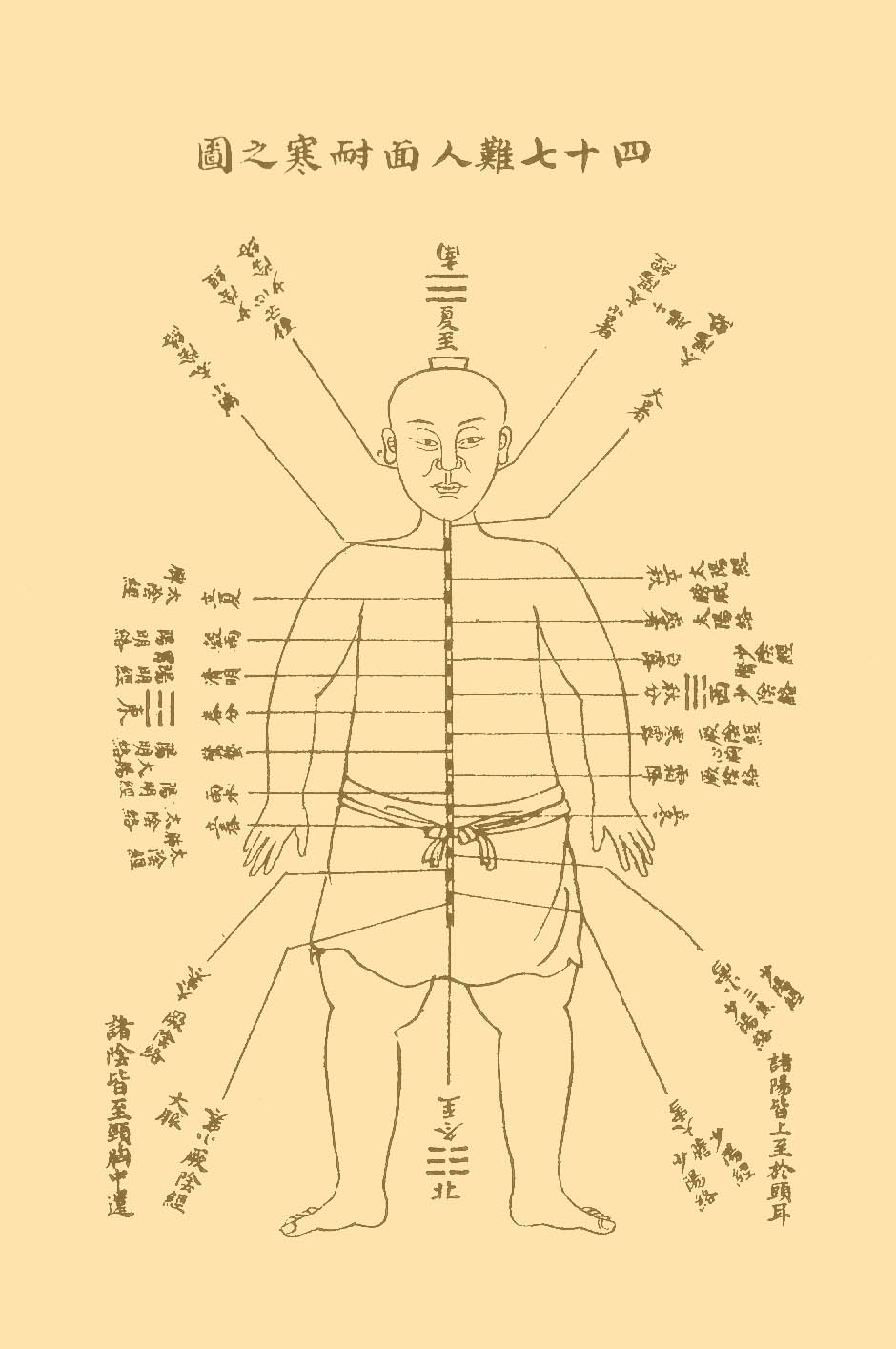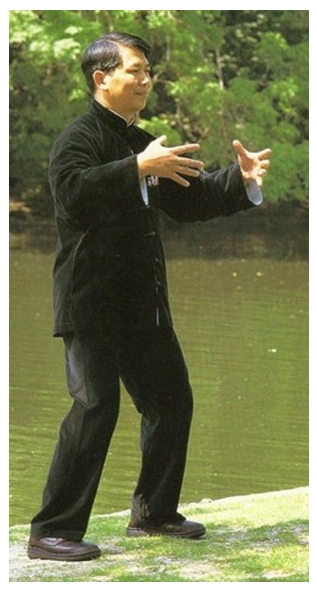Time is all you have

Online group mindfulness practice

There is something very powerful about the emerging trend of remote group mindfulness practices, facilitated over live web-video. I've seen countless times now, how a group of 10-20 people (mixed: from very old to very young - from all over the world - with varied backgrounds) get together online on a regular basis, to do Qigong/Taichi/Yoga/Meditation/etc. together. There is a fascinating element of self-organization to generate "calmness over distance" at play here, which yield positive outcomes and fosters community.
A Brief Study on the Fitness Effects of Standing Exercise - by Chen Gang

Health can be said to be an eternal subject of human development, and health preserving is a widespread concern. In the thousands of years development process in China, a large number of health methods have been formed, which have some common characteristics, namely the basic operation contents including regulating body, breathing and mind (three regulations), the basic standard of being relaxed and nature, as well as the core of training qi.
Among many fitness methods, standing exercise can be said to be a simple, practicable and effective method. Standing still of the standing exercise is a kind of intensive exercise. To stand firm and steadily, the bones and muscles need to maintain the appropriate nervous coordination state, including the consumption and supplement of energy. It consumes biological energy and chemical energy, and replenishes the "vitality" of human body. "Huangdi Neijing" (The Inner Canon of Huangdi) said, "Support heaven and earth, grasp yin and yang, breathing essence qi with single-leg stance and mind concentration, and the muscles and bones incorporated into one". The single-leg stance and mind concentration aims to "looking inward". There is also a saying that "Standing exercise is a hundred times better than practicing". I will explain the fitness effects of standing exercise from the following three aspects.
First, the regulation of body:
Feet shoulder-width apart, toes forward, do not slant outward nor inward, and stand naturally. Bend knees slightly with upright body, keep chest inward, and relax lower abdomen. Lift hands to the front of abdomen and slightly spread fingers. The distance of hands is about 10 to 20 cm, and both hands are away from abdomen about 20 to 25 cm. Hands encircle into an oval shape with the height of between shoulder and crotch. Exercisers should keep head and neck straight with head upward, lower shoulders and elbows, empty axillas, stretch wrists and fingers, keep chest inward and stretch back, erect spine and lower hips, buttocks in, tongue touches the palate, toes grip, and look forward (eye closure or semi-closure are all ok) with a faint smile on the face.
Second, The regulation of breathing
The mouth is apparent close. Give priority to the nasal natural breathing and gradually increase the depth of breathing, transforming to abdominal breathing.
Third, The regulation of mind
Start with the "three lines relaxation method":
The body can be successively relaxed though three lines, namely the front, back, and both sides.
- The first line: both side of head→ both sides of neck → shoulders → forearms →wrists → hands → fingers.
- The second line: face → neck → chest → abdomen → thighs → knees → shanks → feet → toes.
- The third line: back of head → back of neck → back → waist →back of thighs→ popliteal space→ shanks → feet → soles.
Keep mind concentration on a part and meditate "relaxation", while leaving this part, and then keep mind concentration on next part and meditate "relaxation". Start from the first line and step by step, after finishing the relaxation of the first line, and then relax along the second line and third line.
After finishing the relaxation of each line, keep mind concentration on the cease point of the line gently. The cease point of the first line is the middle finger, the cease point of the second line is the big toe, and the cease point of the third line is the heart of the center of foot. After finishing the relaxation of three lines, that is a cycle, focus on the navel, and gently mind concentration on the navel for 3 to 4 minutes in the quiet state. Usually, exercisers should practice 2 to 3 cycles every time, quiet down, and then complete the exercise. In the meditation, if exercisers have not obviously experienced the feeling of "relaxation", do not be impatient and let nature take its course, and continue to relax the body according to the order and meditate "relaxation", properly grasp the speed and strength, and do not too fast nor strong.
To the appropriate extent, "three lines relaxation" gradually transformed to the method of mind concentration and looking inward, such as looking-inward the lower Dantian, and imagining the fever and bloat of Dantian, etc. When feeling the warm, the hotness gradually spread to the entire abdomen. The process must be natural and not artificial, keeping the upper body empty and lower body solid.
Here more on the "Three Lines Relaxation" method - and here a training video.
"Lighting even the smallest candle is better than being angry about the darkness." - Chinese proverb
(?)

"Der Gedanke verlangt Tapferkeit, um erfahren zu werden." - Ernst Bloch
("The thought takes bravery to be experienced.")
The Decision to Practice

Text from "Zhan Zhuang - Standing like a Tree" manual (PDF)
In the book "What I talk about when I talk about running", Haruki Murakami tells us about when he interviewed the Olympic runner Toshihiko Seko and asked him: "Does a runner at your level ever feel like you'd rather not run today, like you don't want to run and would rather just sleep in?" He stared at me and then in a voice that made it abundantly clear how stupid he thought the question was, replied, "Of course. All the time!"
The decision to practice is taken daily and in that choice is the discipline. To connect with your body and take the responsibility of listening and caring. Our modern lives are characterized by daily hubbubs and demanding schedules. Anxiety and tension have become the norm in our everyday routine. So the challenge involves taking steps to include the practice of cultivating energy and making it happen. There are a few simple ways of making this choice easier.
To decide ahead of time how long you will practice and where this will happen may be decisive in starting a routine.
Setting aside "emergency exercises" for when you are caught in unexpected circumstances or when you simply don't have enough time give you an extra chance to stay with the practice. Sometimes interrupting the routine is enough to make you lose ground and give up.
Engaging in the practice as a permanent research being aware of when you need more stimulation. This can mean taking a group class, asking a friend or colleague to practice with you, researching a question you have or discussing an issue with a teacher.
The motivation to keep a practice going has to do with so many different aspects but in the end what makes is the difference is the ability to stay curious and willing to question and dig deeper. The responsibility of practicing comes from that need.
'Most people run not because they want to live longer, but because they want to live life to the fullest. If you're going to while away the years, it's far better to live them with clear goals and fully alive than in a fog, and I believe running does that. Exerting yourself to the fullest within your individual limits: that's the essence of running, and a metaphor for life.' 'What I talk about when I talk about running' - Haruki Murakami
